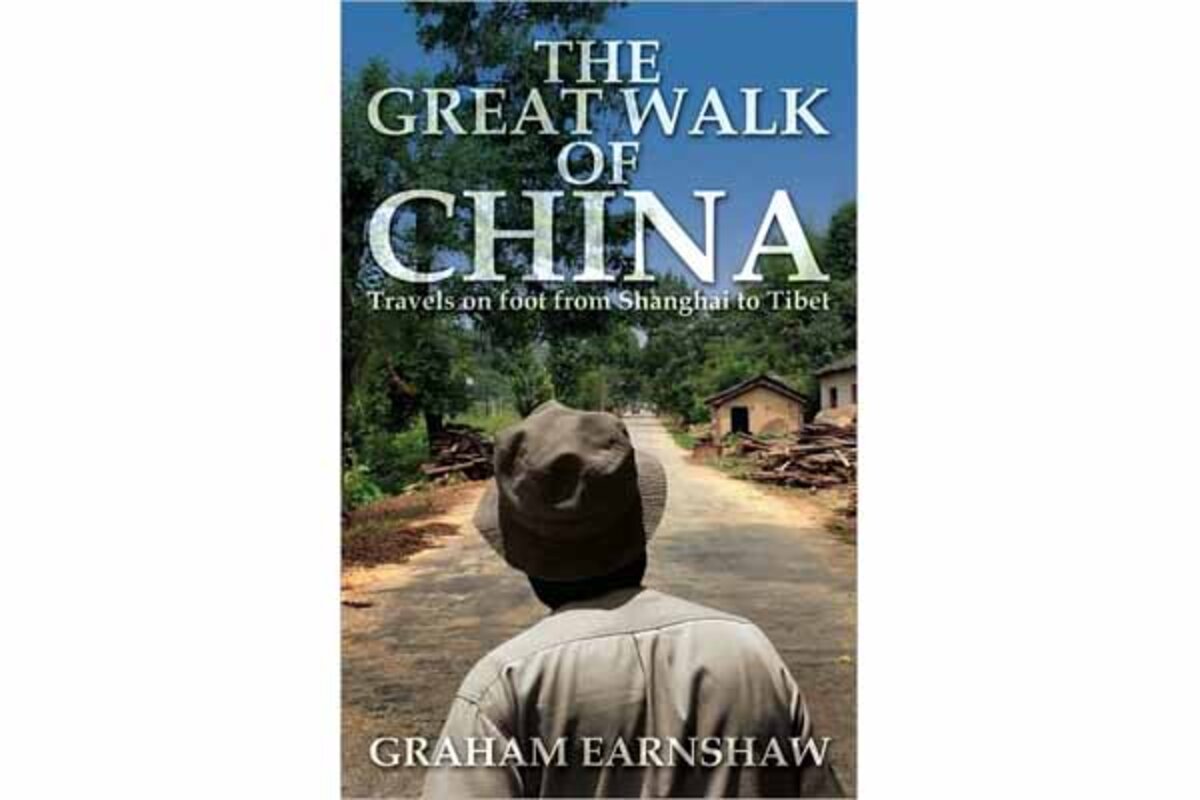The Great Walk of China
Loading...
Imagine you’re a Chinese peasant, stooped over in your field, planting rice.
You glance up and there – coming down the road – is something you’ve never seen before: a foreigner. As he gets closer you see that he’s middle-aged and has blue eyes. When he opens his mouth, you’re astonished to discover that he speaks fluent Chinese.
In recent years, thousands of people in remote Chinese towns and villages have encountered that foreigner – Graham Earnshaw – who is walking westward across China, from Shanghai to Tibet.
Earnshaw’s book The Great Walk of China actually tells the story of a series of walks. Since 2004 he has been walking across China for several days each month, sleeping in local inns. He then returns to Shanghai, and later comes back to the exact spot where he left off.
This feat is all the more remarkable because Earnshaw, who is in his 50s, walks with a decided limp – the result of a childhood illness and surgery that left one leg shorter than the other.
Originally from England, Earnshaw has worked as a journalist and businessman in China and the region since the 1970s. His walk is taking him through China’s heartland – a far less prosperous area than the east coast. It is also a region where many people have never seen a foreigner.
Earnshaw’s language ability allows him to chat with ordinary people and read everything from graffiti to propaganda slogans.
In many small towns, police are suspicious of what he’s up to and demand to see his passport and visa. Earnshaw seems to enjoy toying with them – asking them to show him their ID. When one policeman responds that he is off duty and does not have his ID, Earnshaw replies, “Oh well, next time then,” and continues on his way – only to be stopped a short time later by police with IDs.
But he receives a friendlier reception every day from farmers and townsfolk, who invite him to stop for a cup of tea or to share a meal. Along the way he visits schools, and even tries his hand at planting rice.
He sees the quirky side of these remote towns, making curious discoveries such as the photo studio in which Chinese babies pose in front of pictures of Hawaiian beaches. Or the small shops in which people pay to sit and have an intravenous liquid drip into their arm as a cure for minor ailments like colds.
When the Chinese tell him they are poor compared with the people in England, he responds that they have fresh food and clean air. Earnshaw admits he sometimes glamorizes life in rural China, but he points out that, even in poor areas, life there is better today than it once was.
In remote regions, Earnshaw finds that Mao posters are still displayed in homes and faded slogans such as “Love Collectivism” are still visible on farmhouses.
One of the book’s most poignant scenes, however, is Earnshaw’s encounter with an elderly man named Zhou, who found himself on the wrong side of history.
After Mao Zedong came to power, Zhou’s father was executed for having fought against the Communists. Later, Zhou – more educated than most in the countryside, was banished to a remote village, where he was never accepted.
Awestruck by his chance encounter with Earnshaw, Zhou tells him, “It’s like being visited by a god.” He then proceeds to pour out decades of misery, telling Earnshaw how his life “had been ruined by the Communist Party.”
Earnshaw finds large areas of central China inhabited mainly by young children and their grandparents; the working-age parents spend most of the year far from home, working in China’s cities.
He sees evidence that China’s one-child policy is not always strictly enforced, but also reads propaganda posters designed to halt female infanticide. Hints of another problem are evident by the many posters that warn against planting opium or using it.
Earnshaw has taken thousands of photos along the way, yet each chapter contains only a single, quarter-page black and white picture – not enough to do justice to the spectacular scenery and fascinating encounters he describes.
One portion of Earnshaw’s journey passes along a route taken by the famed 19th-century English traveler, writer, and natural historian Isabella Bird in 1898. He cites passages from Bird’s diary. While she was no less adventurous than Earnshaw, her inability to speak Chinese made it impossible for her to have the type of conversations that make “The Great Walk of China” so outstanding.
Oh, and one more thing: while Earnshaw plods his way, one unsteady step at a time, Bird was carried in a sedan chair by coolies.
Mike Revzin, a journalist who worked in China, runs .
Join the Monitor's book discussion on and .





